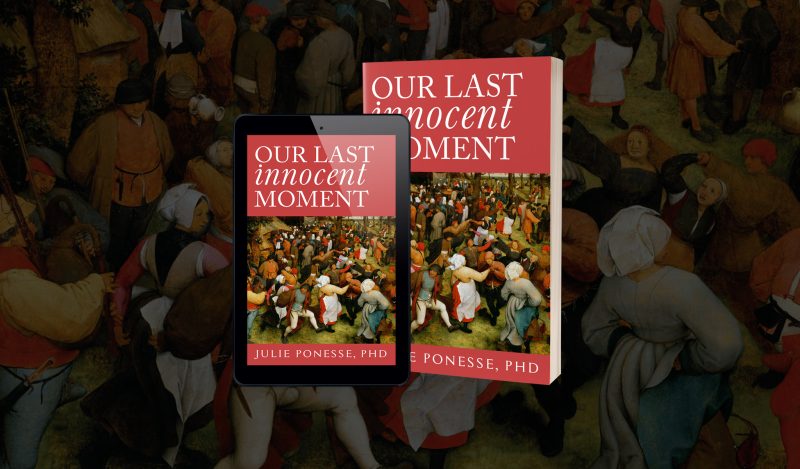Lewis Mumford said, “Men counted numbers. And then, only numbers counted.”
From its beginning, this has been a numbers game. The early, politically-driven strategy was to repeatedly cite a panic-building model predicting 2.2 million American Coronavirus deaths. Soon afterward, mass administration of 40 cycle PCR tests and CARES Act incentives enabled hospitals to jack up the number of ostensible cases and deaths in order to create support for initiating and sustaining lockdowns, school closures, and mask, test and vaxx mandates. The deaths of many old, unhealthy people were attributed to the virus. The thumb was always on the scale.
The dubious twin notions supporting society-wide interventions were that we should pull out all stops to keep the maximum number of people alive—no matter their state of health—and that every death—at any age—was unacceptable.
Few people—and seemingly no Democrat bureaucrats, governors, mayors or teachers’ unions—acknowledged the harm that the lockdowns, school closures, mask mandates and vaxxes would cause to young people. Nor did they consider something that should have been plainly obvious, namely that closing schools, offices and other public places would prevent millions of humans from being born.
Despite the decline of the American family, most children are even today born to married couples who conceive naturally. The path of relationships leading to marriage is steep, curved and rocky. Most people climb this path in their teens and twenties. Those years are about breaking hearts, having hearts broken and learning how to build a lasting relationship. The process of pairing off inevitably entails much trial and error.
Assiz Ansari, the author of Modern Romance observes that coupling has become much harder over the past forty years. Whereas, decades earlier, people were satisfied to marry—and stay married to—people with whom they shared a basic compatibility, many people now set the marriageability bar much higher. Soul mates are sought.
Ansari says those seeking companions have become “rational optimizers.” This is a new label but not a new idea. Even in the 1950s, the Sociologist Erich Fromm compared pair-bonding to shopping for consumer goods. The Internet has ramped up latter-day mate-shopping. Being accustomed to getting any item in any color or size delivered to our doorstep, modern mate seekers bring the same expectation to what used to be called courtship. People seek—and expect—partners who check off a growing series of boxes: a pleasing appearance, a good personality, a good job, plus demographic—especially political— litmus tests.
It might simultaneously be true that, as people have raised their relational standards, potential spouses have become less appealing than they used to be. Our culture and our device addictions foster attention deficits, anxiety and narcissism. Additionally, many latter-day young people are more devoted—or their employers expect them to be devoted—to time-intensive careers, making them less physically or emotionally available to their mates and families.
For all the above reasons, it was hard enough pre-March, 2020, for men and women to find companions.
Then Coronamania dropped an atomic bomb on human interaction. All of the social restrictions: lockdowns, closed schools, workplaces, bars, gyms and houses of worship, and mask and vaxx mandates put people out of contact with each other. The chance to organically, spontaneously build a relationship was sharply reduced.
Nearly every married couple I know met at school or at work. Unmasked. During that in-person familiarization process, people learn about each other and make guesses about each other’s level of interest. When there’s mutual interest, it is, dare I say, intriguing and exciting. Practically and emotionally, in-person relationship building is a far different process than is a Match.com search.
A recent survey found that 63% of people looking for mates found that the Corona reaction had made it harder to find mates. I’m surprised that number isn’t even higher. Coronamania’s social isolation is why so many young people caved to the demand that they take injections that they not only didn’t need but that presented serious risks. It was evil for governments to put young people, who had so much social time stolen from them during the pandemic, in this predicament.
Coronamania was not merely a brief, consequence-free time-out for couple-making, like a yellow— hold your place—flag in the Indianapolis 500. People aren’t fungible. Missed opportunities to meet people can’t always be redeemed. Lost time is irreplaceable. The failure to find someone suitable in 2020-2021 doesn’t mean that young people can find someone just as lovable in 2022, or thereafter.
Given Coronamania’s curtailment of social life and in-person work and school, many fateful romantic encounters simply didn’t occur. Many people may never meet someone with whom they might have been as compatible as someone they might have met in an unfettered society. The relational road not taken may be the road that many young people never knew existed. Ships passed in the night, or masked. Or didn’t pass at all.
While many cite the grossly inflated Covid death tolls—overwhelmingly among the old, who already had a fair chance at life—few showed any concern about the social and psychological costs of keeping young people apart. In the near term, much less face-to-face interaction has reduced the number of new relationships, which has already caused many young people to be unnecessarily lonesome and depressed.
Over time, having kept young people from meeting other young people will lessen the number, and delay the onset, of marriages. Consequently, many millions fewer young, vital people will be naturally conceived and born. To compensate for aging-out of their peak fertile years, aspiring parents will use more of the morally and socially problematic reproductive technologies that have, over the past four decades, enabled conception at advanced ages. But this industrial/consumerist approach to procreation is not an acceptable substitute for organic conception.
In addition to the harm that Coronamania’s social restrictions have had on fertility, emerging data suggest that the vaxxes harm reproductive function.
Governments and lockdown, mask and vaxx supporters made a terrible, politically opportunistic and/or foolish decision to physically separate and inject young people seeking to find life mates and start families. Consequently, America will continue to trend older and less vital. Having fewer young, energetic people will deeply damage society: socially, psychologically, economically and spiritually.
Coronamania lockdowns, school closures and mask and vaxx mandates were ostensibly designed to extend the lives of a fraction of old, unhealthy people. Pursuing these gerontocentric strategies means that many currently young individuals will lead unpaired lives and that millions of humans who should have been born, won’t ever be. This exchange has been, and will be, lastingly, existentially catastrophic in ways both visible, and perceptible but invisible.
Published under a Creative Commons Attribution 4.0 International License
For reprints, please set the canonical link back to the original Brownstone Institute Article and Author.









